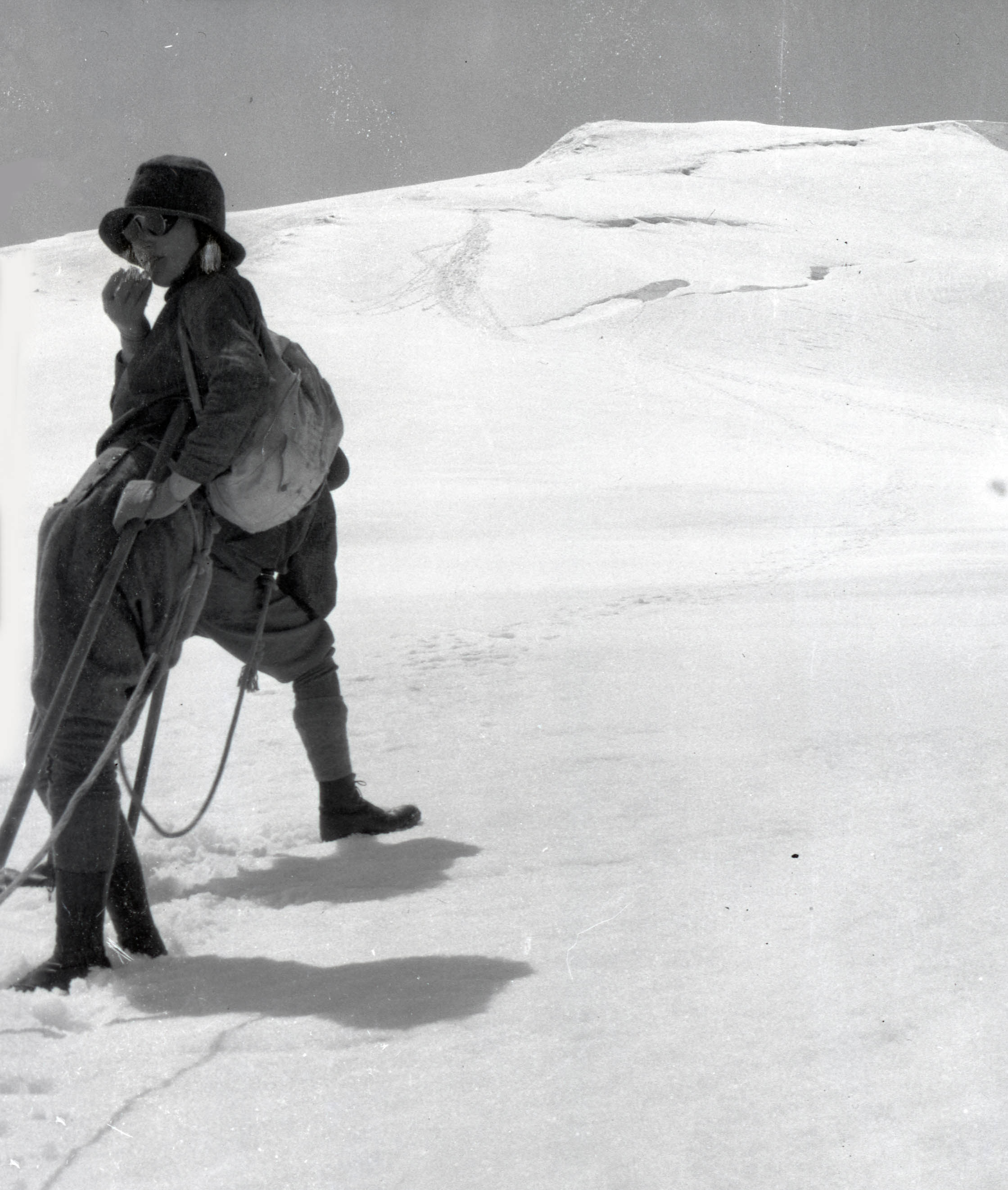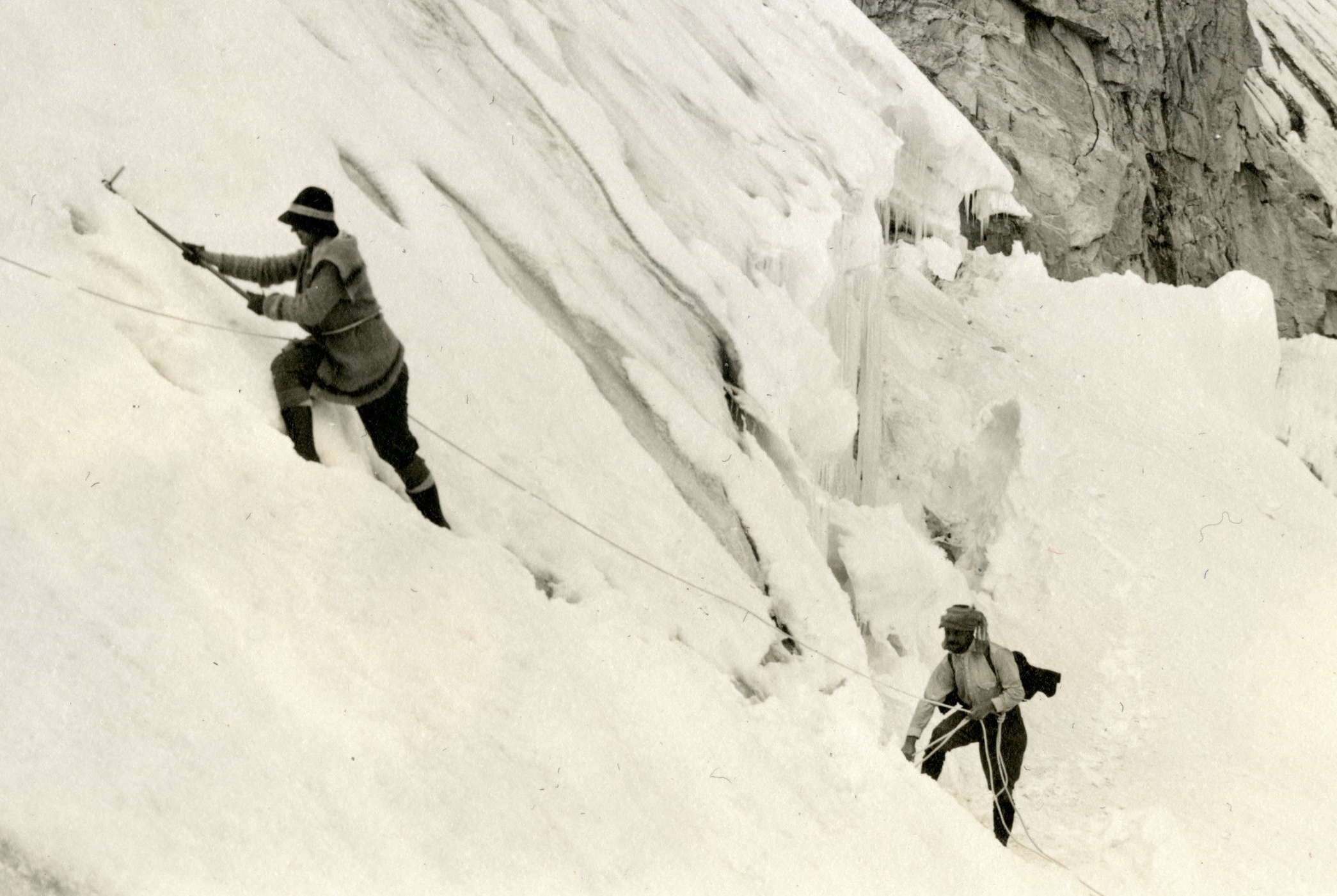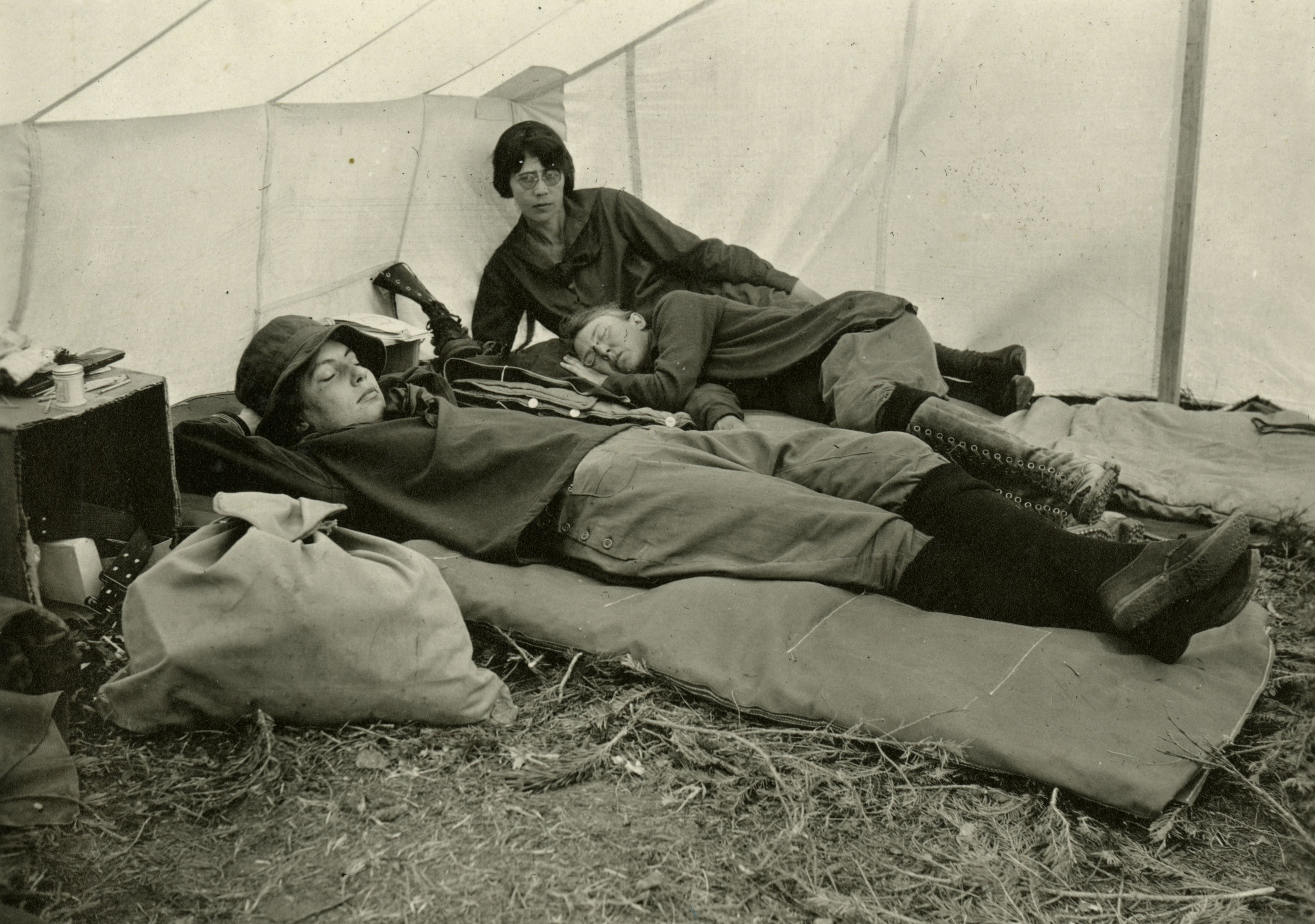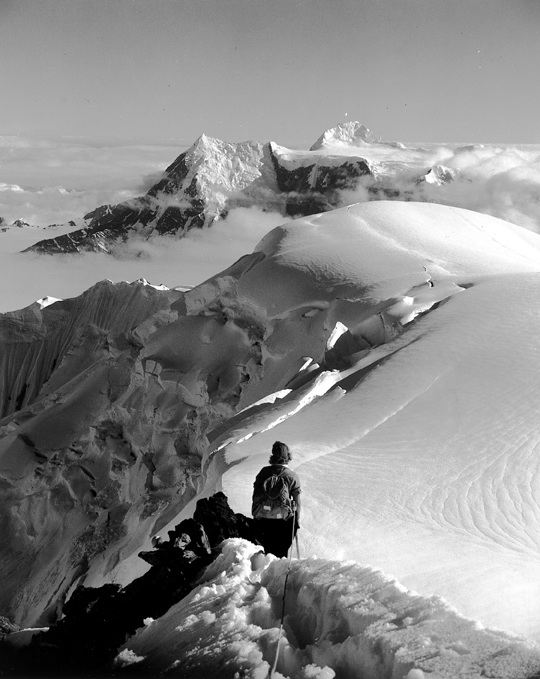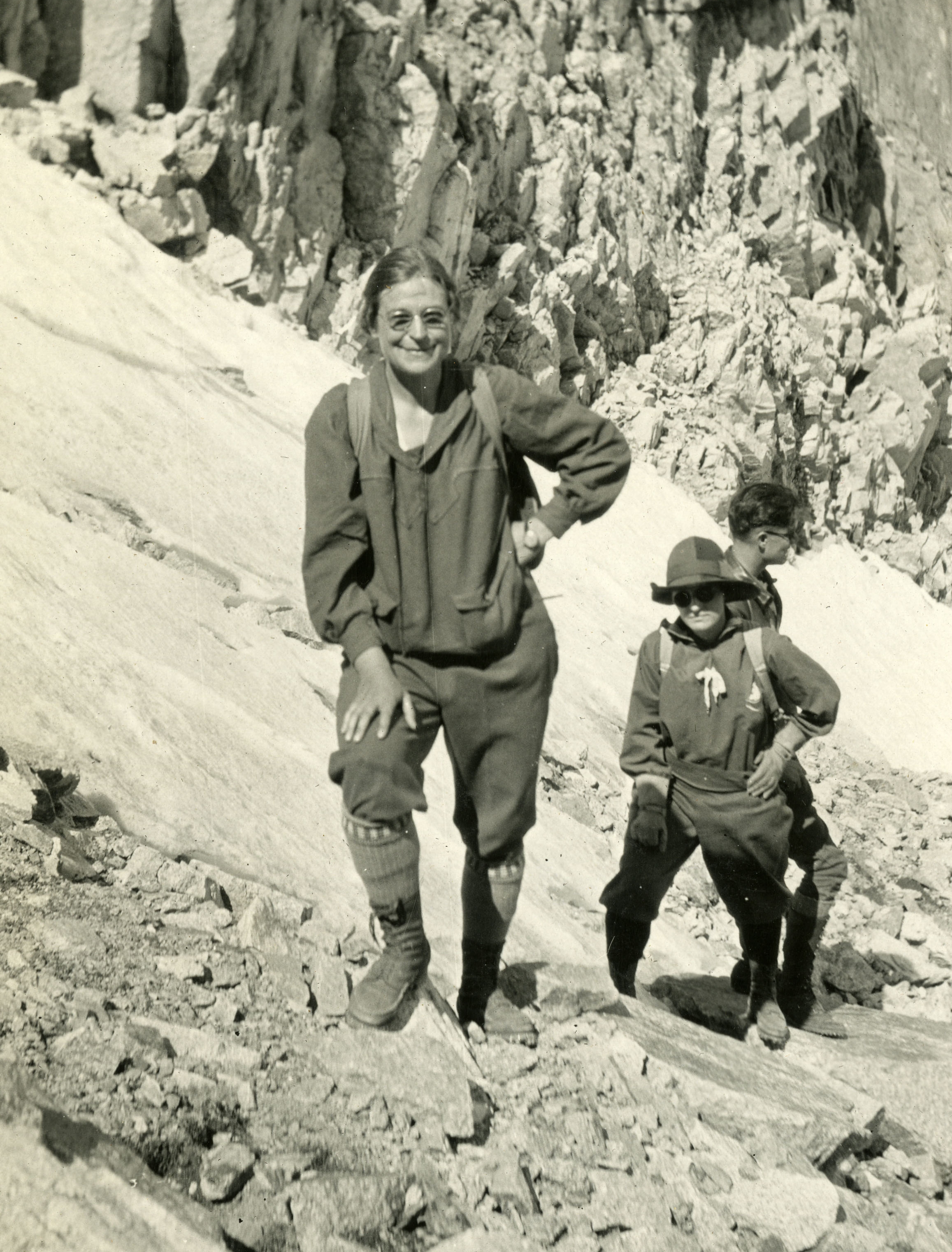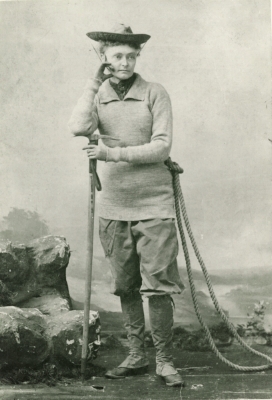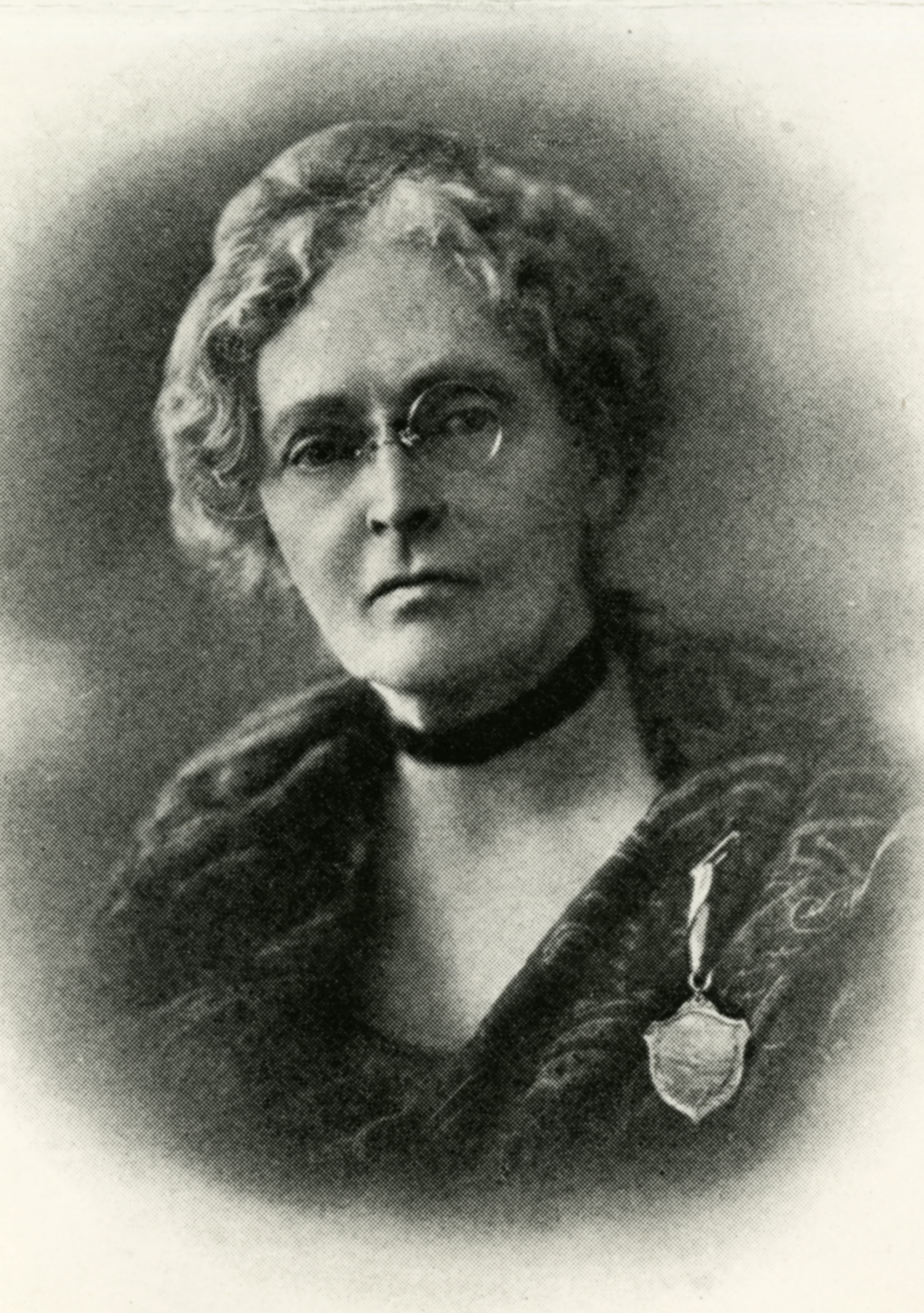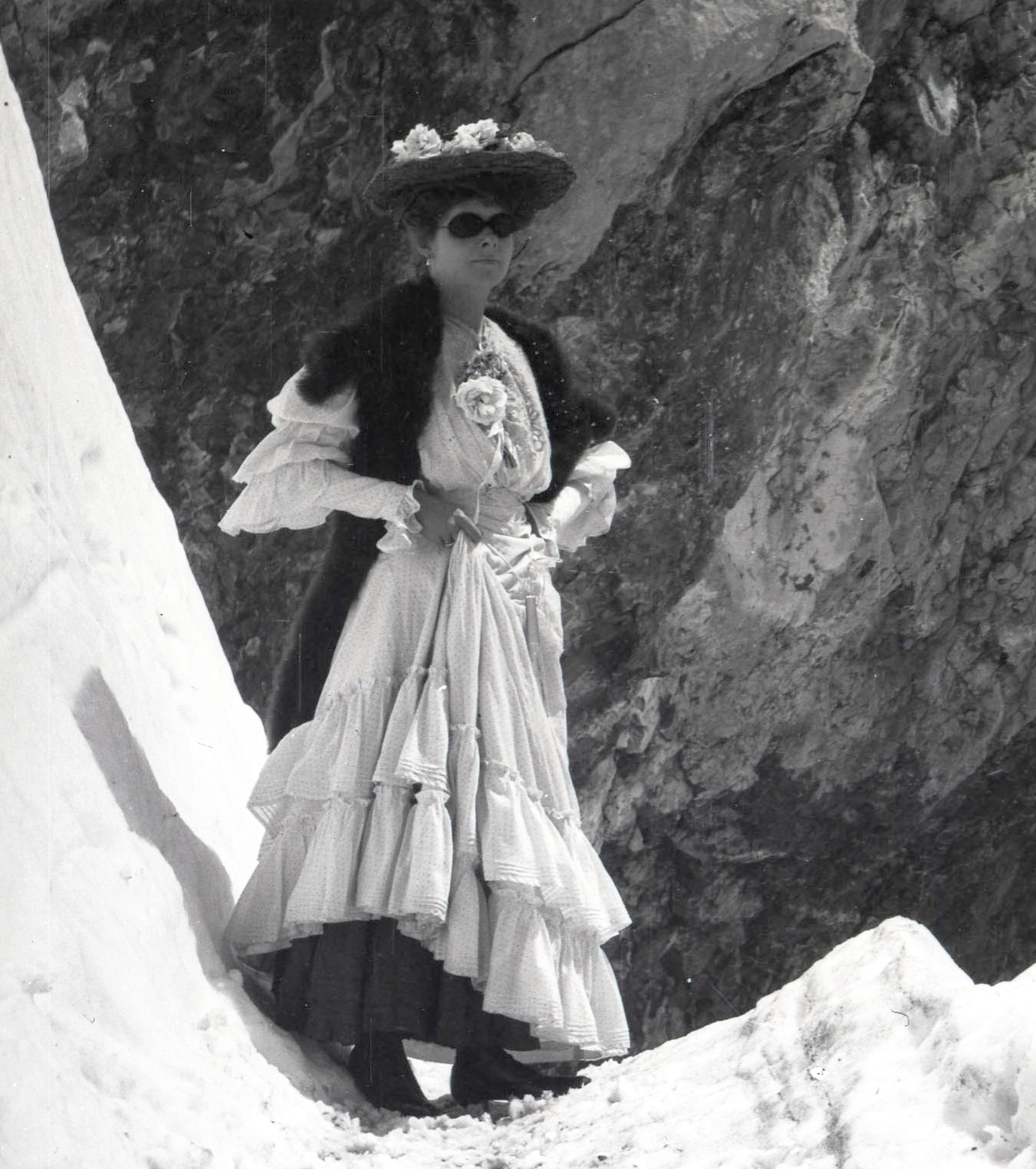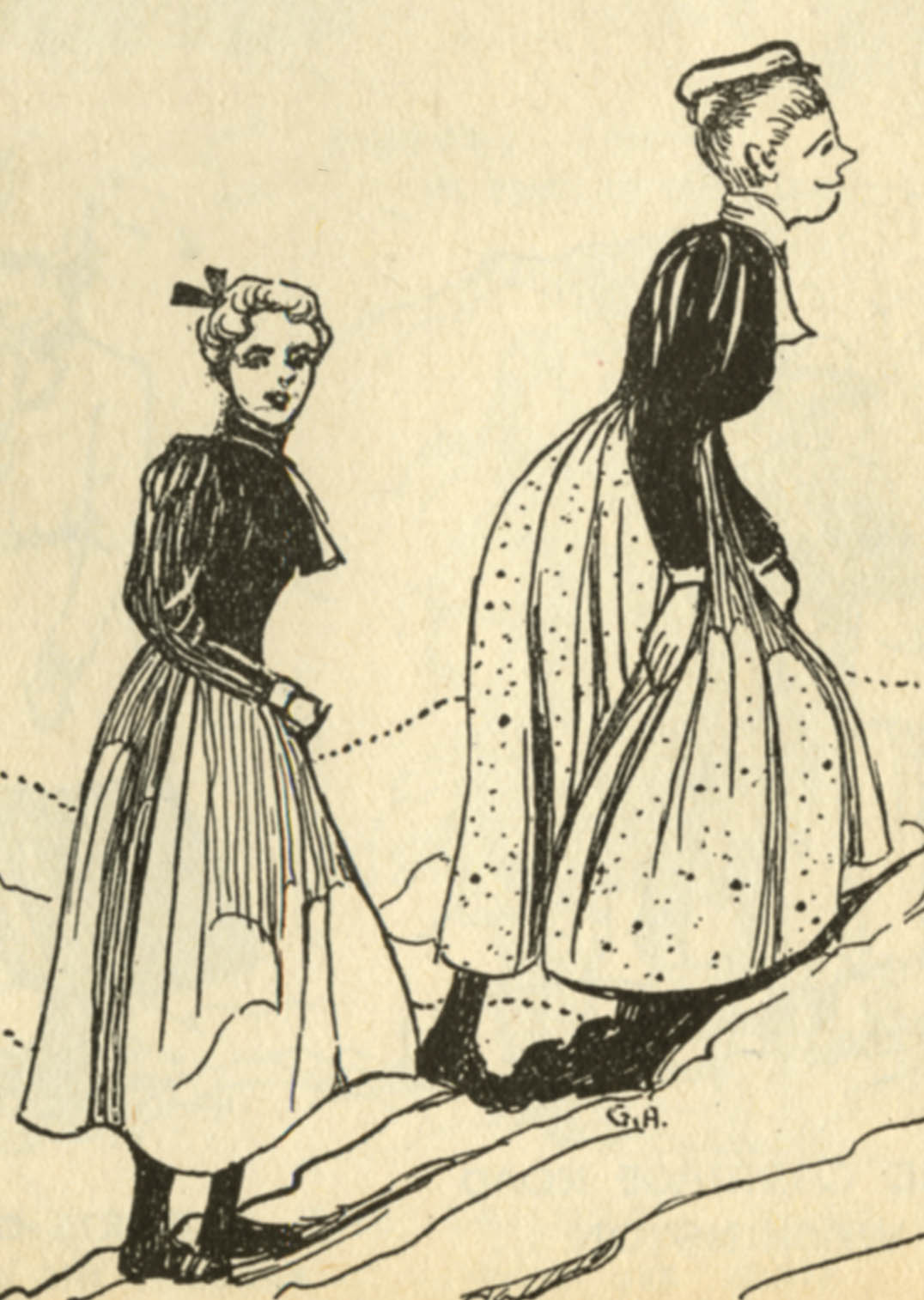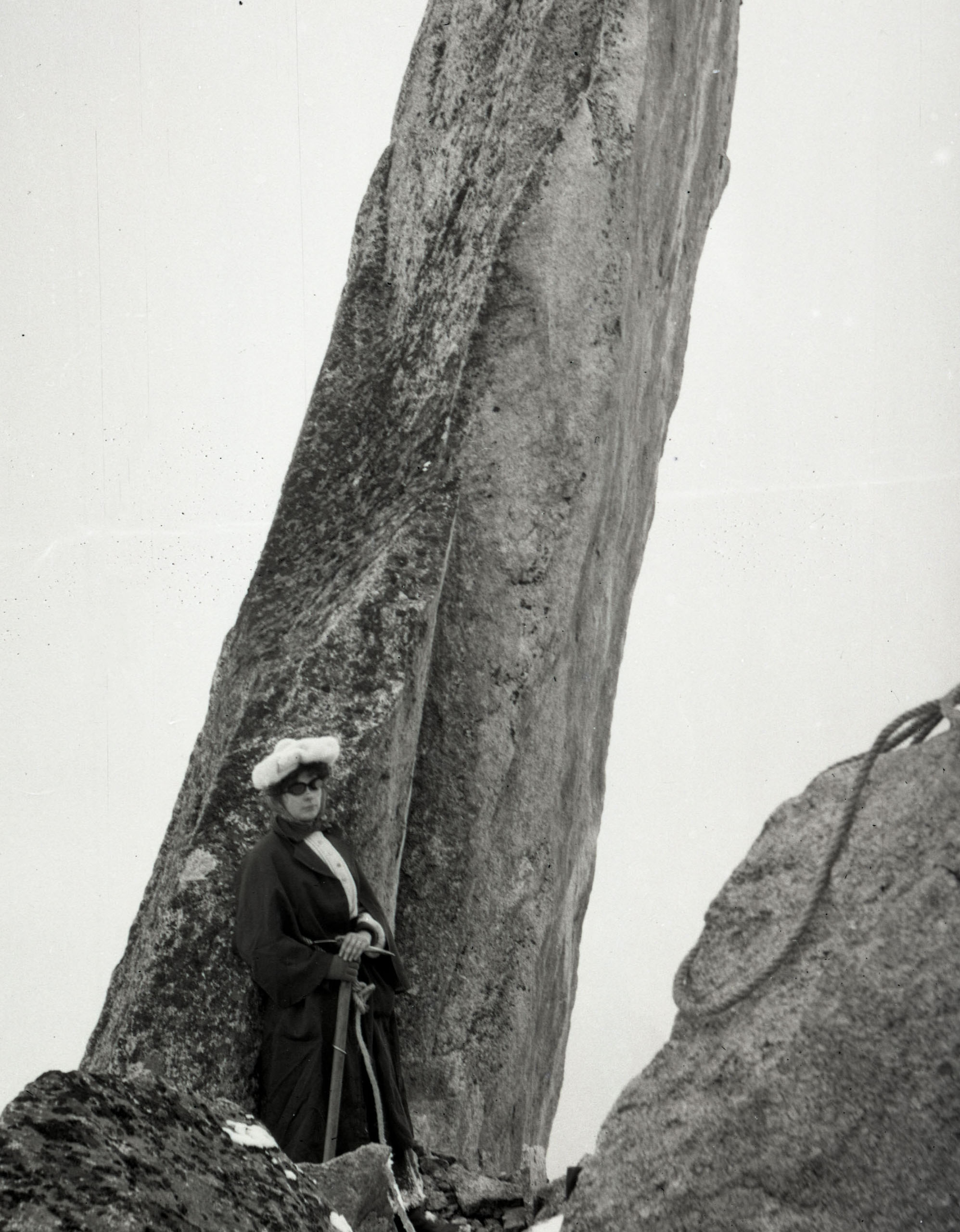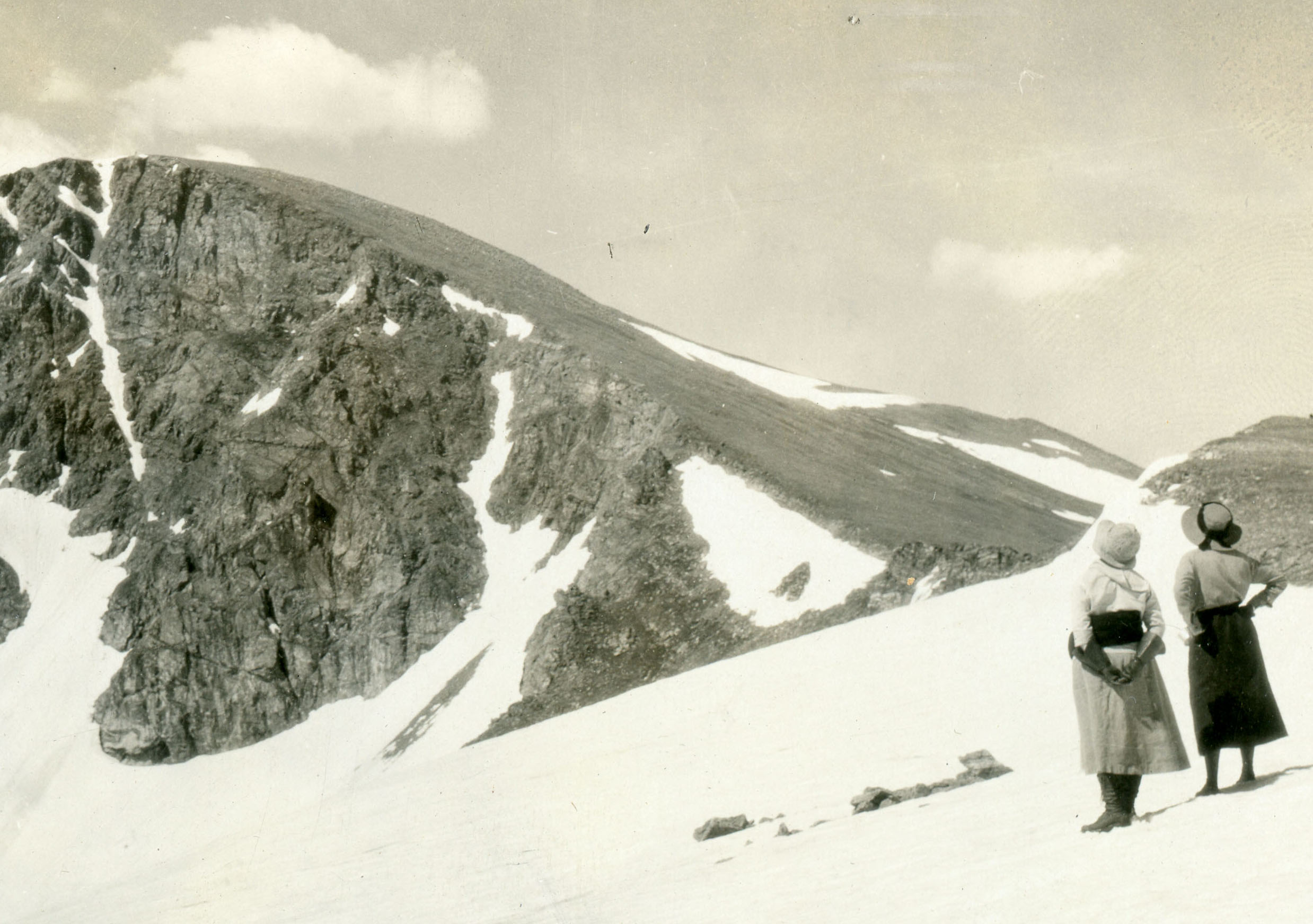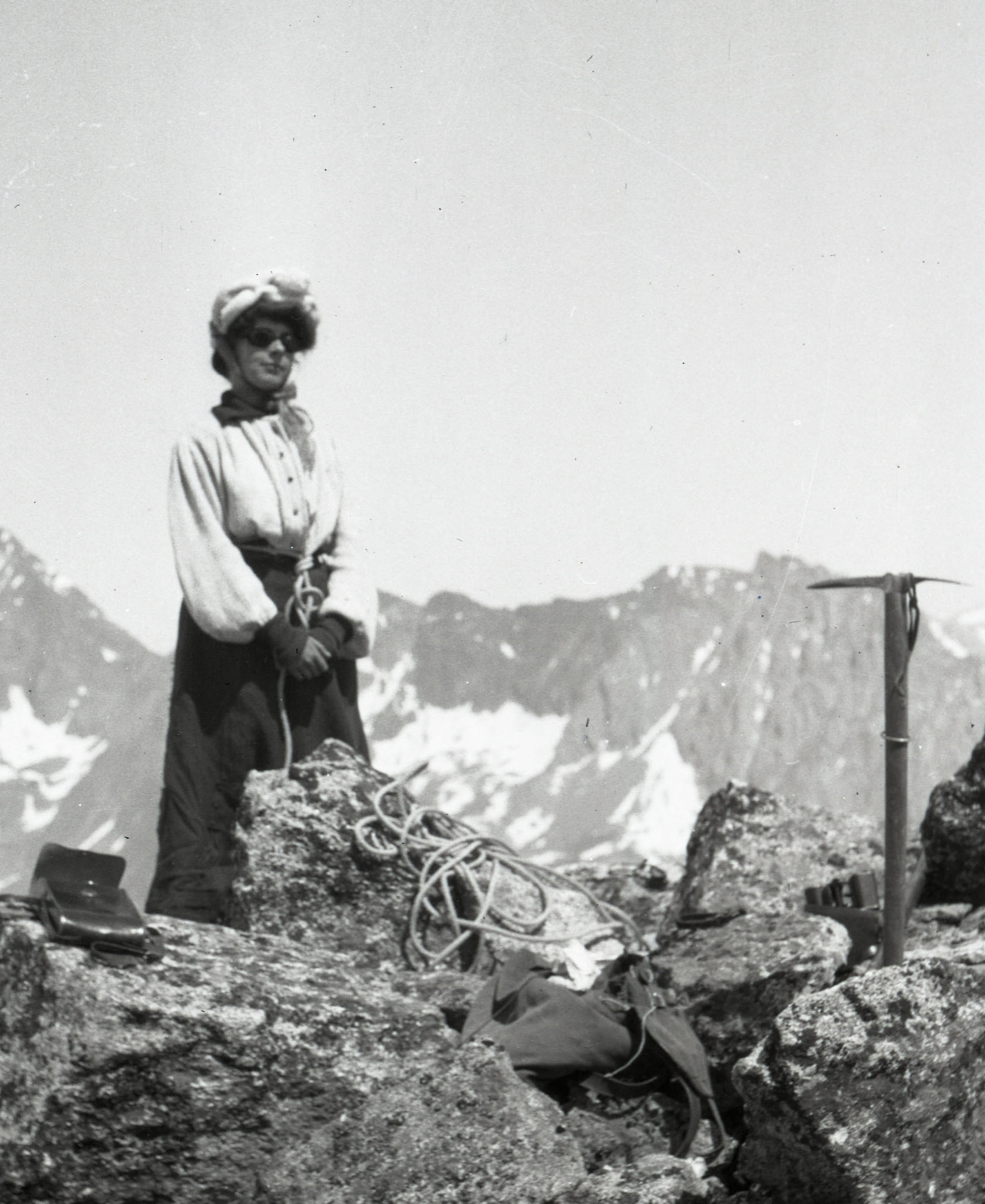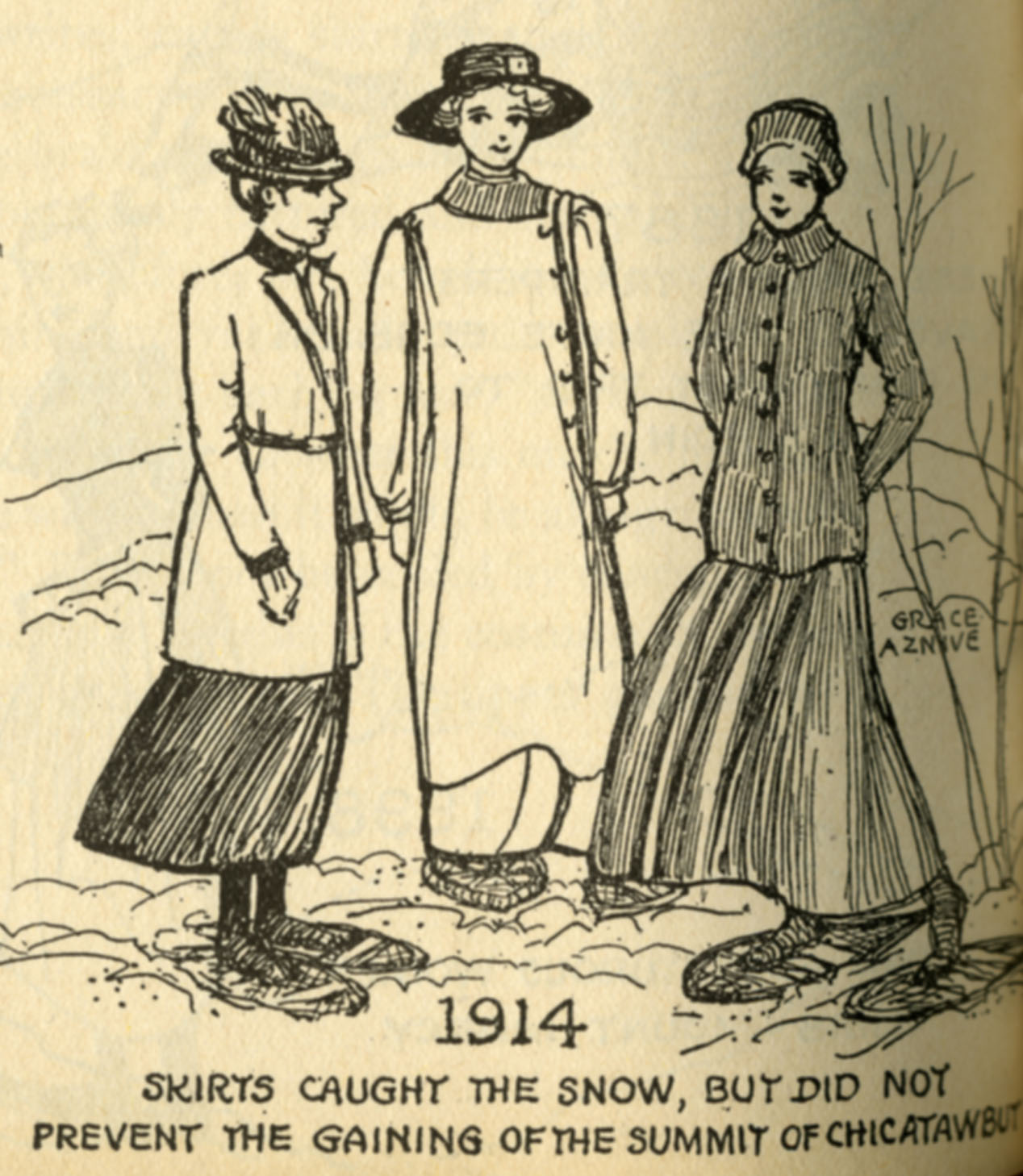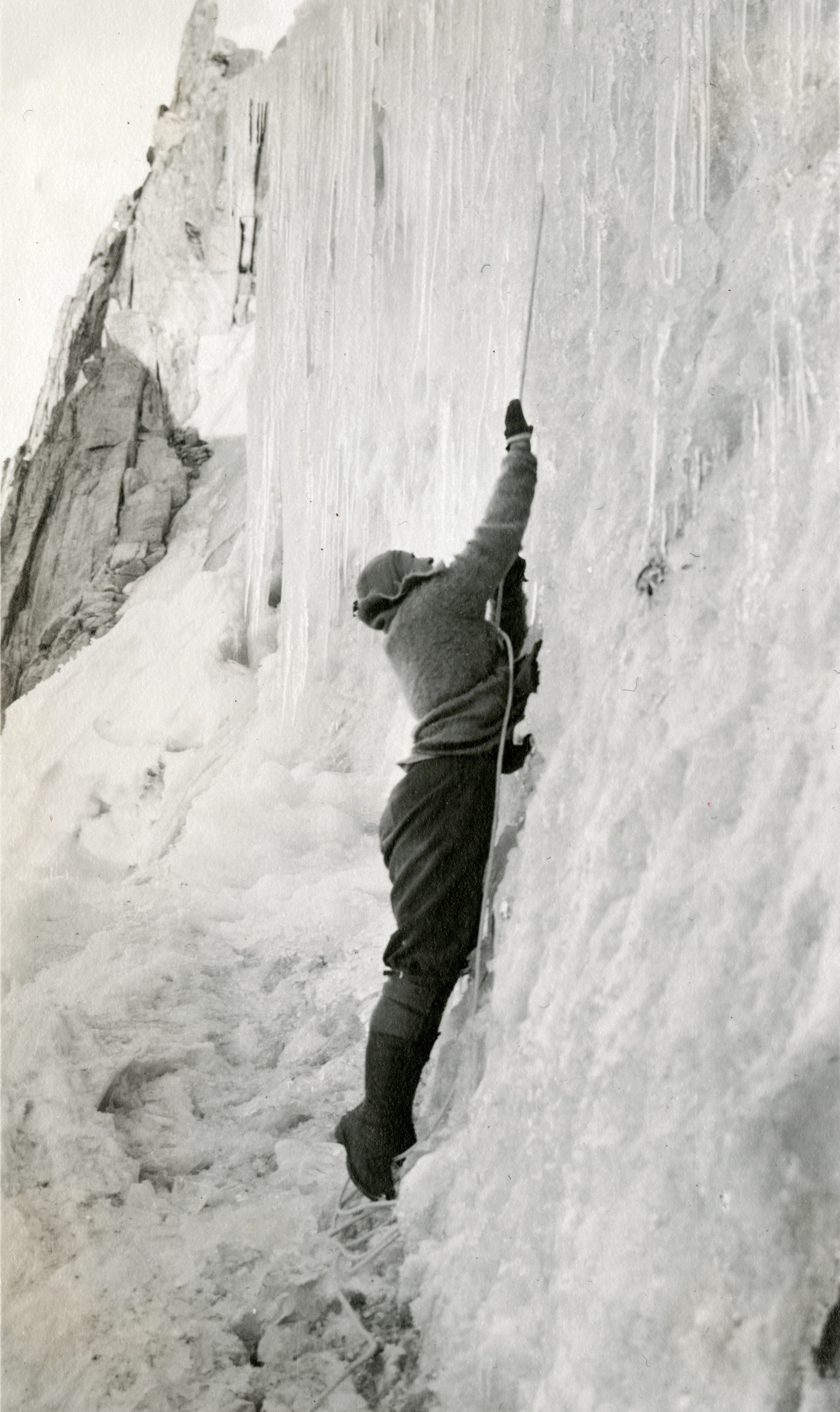by Allison Albright
A brief history of early climbing attire for women
Many instructional books on climbing and mountaineering from the 1920s included a chapter or two, written by women, about what clothing and equipment aspiring female climbers should use, as well as the usual tips and instructions for avoiding frostbite and preventing a fall. These chapters were often called "For the Lady Mountaineer."
In honor of Women's History Month, we're focusing on women for the second installment of our blog posts about early climbing. We're looking at the narrow options available to women in the early days of climbing and what that meant for women climbers. Women faced the same challenges and dangers as men while climbing, but for many years they faced them by necessity in clothing that made their work much more difficult.
The history of what women wore when climbing is an integral part of women's participation in the sport. Social convention regarding how women are dressed is still a topic of debate today, but in the late 1800s and early 1900s these conventions were incredibly rigid. Women who didn't adhere to a pretty narrow standard of what was acceptable faced, at minimum, social ostracization and damage to their reputations. At worst, they could be arrested or fined just for wearing pants.
Women climbing in the 1800s and the early 1900s had to choose between wearing something practical but scandalous (or even illegal), or wearing something acceptable socially but that made climbing harder.
For many years women climbed in dresses which included several layers of slips and petticoats underneath. They were heavy and restrictive and tended to drag in the snow. Nothing like making your way to 15,000 feet in a sodden wool dress.
There were, however, a few other options.
Bathing suits
Some braver souls climbed in their bathing suits, which fully covered a woman's arms and legs and were made of flannel.
An illustration of a lady climber of 1877 in her climbing garb of choice - her bathing suit.
Part of article entitled Fashion on the Peaks: 1876 - 1935, published in Appalachia Magazine Vol. 20 1934-1935, pages 372-379.
It should be noted that even as modest as these bathing suits were, it was still considered inappropriate for women to wear them in public or in mixed company. It's hard to find a good comparison, but it might have been similar to wearing one's pajamas or lingerie while climbing today. One probably wouldn't be arrested for it, but it took guts.
Bloomers
Bloomers are named for the women's rights activist Amelia Bloomer, who was a great proponent of their use during the 1800s. At that time, bloomers were most often worn as loose fitting pants under a shortened dress. They became a symbol of women's liberation and were widely criticized as undermining male authority. They also allowed women a great deal of freedom of movement.
Of course, women started using these garments to climb mountains. Fay Fuller wore bloomers on her ascent (the first by a woman) of Mount Rainier in 1890. She was widely criticized for being immodest.
Fay Fuller climbing in 1890 courtesy of the Mazamas Library
VM1993.008 William G. Steel Collection, Mazama Library and Historical Collection
By the late 1800s the voluminous pants and dress combination had morphed into what were called "athletic bloomers" which were sort of puffy shorts gathered just below the knee and worn with stockings. Women wore them for all kinds of athletic activities, including mountain climbing.
Women exercising in athletic bloomers in Sweden, early 20th century.
Public domain, via Wikimedia Commons
The Overlook in Yosemite Valley California - the girl standing in the middle is wearing athletic bloomers.
From the American Alpine Club Library's Mountain Views Collection.
The popularity of bloomers waned in the 1930s when it became common for women to wear pants and shorts cut nearly the same as men's fashions, but they were a necessary step in getting there and they allowed women a previously unknown amount of freedom.
Wearing the pants
Why didn't they just wear pants to climb? A few women in the 1800s did. Annie Smith Peck (pictured below) climbed the Matterhorn in 1895 wearing a pair of trousers. However, her successful summit of one of the most technical routes of the time was overshadowed completely by the question of whether or not she should be arrested for wearing pants. It wasn't uncommon in 1895 for women to be arrested for this.
Climbing Dresses
Though a few were willing to ignore convention (and the law), during the 1800s climbing in a dress was de rigueur. Henriette d'Angeville summited Mont Blanc in 1832 (she was the 2nd woman to do so) wearing an outfit which consisted of a dress over men's pants. The outfit weighed a total of 14 lbs and included petticoats and a boa. Short of a bathing suit, this was the most stripped-down climbing dress to date.
In his book A Tramp Abroad, Mark Twain had this to say about her outfit:
"Miss d'Angeville put on a pair of men's pantaloons to climb it, which was wise; but she cramped their utility by adding her petticoat, which was idiotic."
Twain, who could wear pants without getting arrested, did not attempt a Mont Blanc summit, with or without petticoats.
It was common for women to be criticized for their climbing garb no matter what they wore.
Henriette D'Angeville in her custom climbing outfit.
J. Hébert - Aus Segogne: Les Alpinistes célebres. Paris 1956. Photo J.Colomb-Gérard / Ciba Rundschau 1965/4 S. 29 / Collection G. & C. Franke (Repro)
Things loosened up a bit in the early 20th century, but women wearing pants were still often seen as inappropriate. Many women still opted to climb in their dresses. This made it more difficult, but women climbed - and summited, nonetheless. Dresses were still common climbing attire for women until around the 1920s.
Knickerbockers
“The costume usually adopted by women climbers is a coat and skirt, flannel blouse, and knickerbockers.”
Around the 1920s it became common for women to climb in knickerbockers. They were often worn under a skirt which could be removed and stowed in a rucksack when climbing and worn again (for "decency") for pictures or when traveling through towns.
Fanny Bullock Workman was a professional female mountaineer who opted to climb in knickerbockers, but brought a skirt to wear over them when necessary. She's pictured here in an iconic photo on Silver Throne plateau, Karakoram in 1911 - when women in the United States still were unable to vote.
Annie Peck (second from the right) is photographed in knickerbockers on the first ascent of Coropuna in the Andes in 1911. She was in her 60s.
“Women have learnt by experience that convention must give way to common sense in the matter of costume. [...] The skirt is still often looked upon as a necessity in the Alps, but it is discarded early in an ascent.”
By the 1920s knickerbockers were more widely worn and had become better accepted. The climbing attire worn by women came to more closely resemble the climbing attire worn by men. By the 1930s men and women's climbing clothes were nearly the same.
A "climbing costume for women" pictured in Mountaineering Art, 1920 by Harold Raeburn (section on women's climbing and climbing apparel written by Ruth Raeburn). The model sports a double breasted wool jacket, knickerbockers and puttees (the leg wraps), as well as boots, ruck sack and ice axe.
Women who loved climbing never let their clothing keep them from the summits, but as attitudes about what they could wear changed, they were able to accomplish ever greater things.
